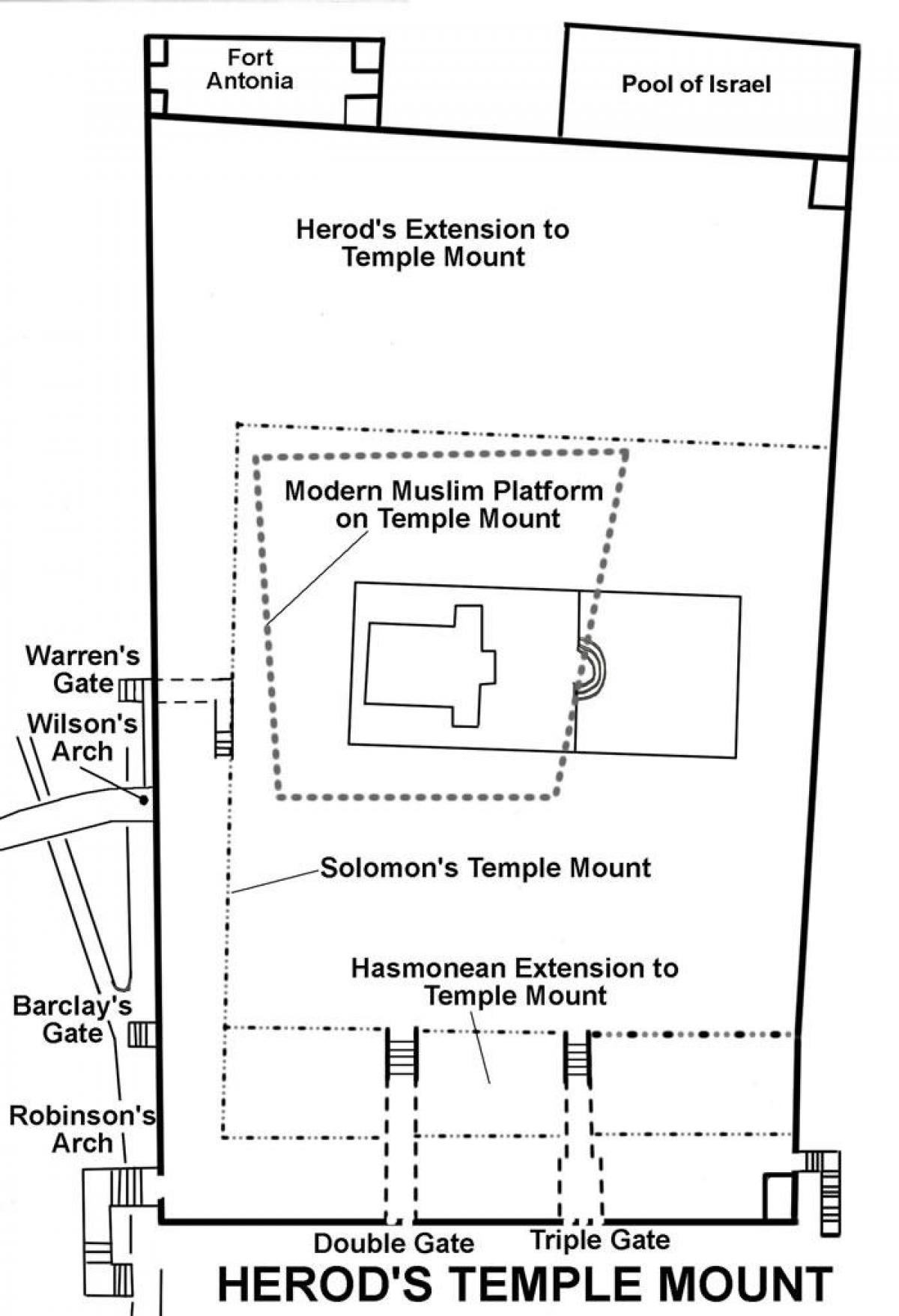search
Herod's temple map
Map of Herod's temple. Herod's temple map (Israel) to print. Herod's temple map (Israel) to download. In the eighteenth year (20-19 B.C.) of his reign Herod rebuilt the Temple on a more magnificent scale. There are many evidences that he shared the passion for building by which many powerful men of that time were moved as its shown in Herod's temple map. He had adorned many cities and had erected many heathen temples; and it was not fitting that the temple of his capital should fall beneath these in magnificence. Probably, also, one of his motives was to placate the more pious of his subjects, whose sentiments he had often outraged. The Jews were loth to have their Temple pulled down, fearing lest it might not be rebuilt. To demonstrate his good faith, Herod acccumulated the materials for the new building before the old one was taken down. The new Temple was rebuilt as rapidly as possible, being finished in a year and a half, although work was in progress on the out-buildings and courts for eighty years. As it was unlawful for any but priests to enter the Temple, Herod employed 1,000 of them as masons and carpenters.
The Temple proper as reconstructed by Herod was of the same dimensions as that of Solomon, viz.: 60 cubits long, 20 cubits wide, and 40 cubits high as its mentioned in Herod's temple map. At the entrance to the outer Temple hung a veil embroidered in blue, white (byssus), scarlet, and purple; the outer Temple was separated from the Holy of Holies by a similar curtain. The outer curtain was folded back on the south side, and the inner one on the north side, so that a priest in entering the Holy of Holies traversed the outer Temple diagonally. Substructure of Temple of Herod, Now Called "Solomon Stables."(From a Photograph by the American Colony at Jerusalem.) If sacred tradition compelled Herod to conform closely to the ancient plan of the holy house, allowing him to vary little from precedents save in its façade, his Grecized taste and his genius for building found ample scope in the Temple courts and cloisters.


